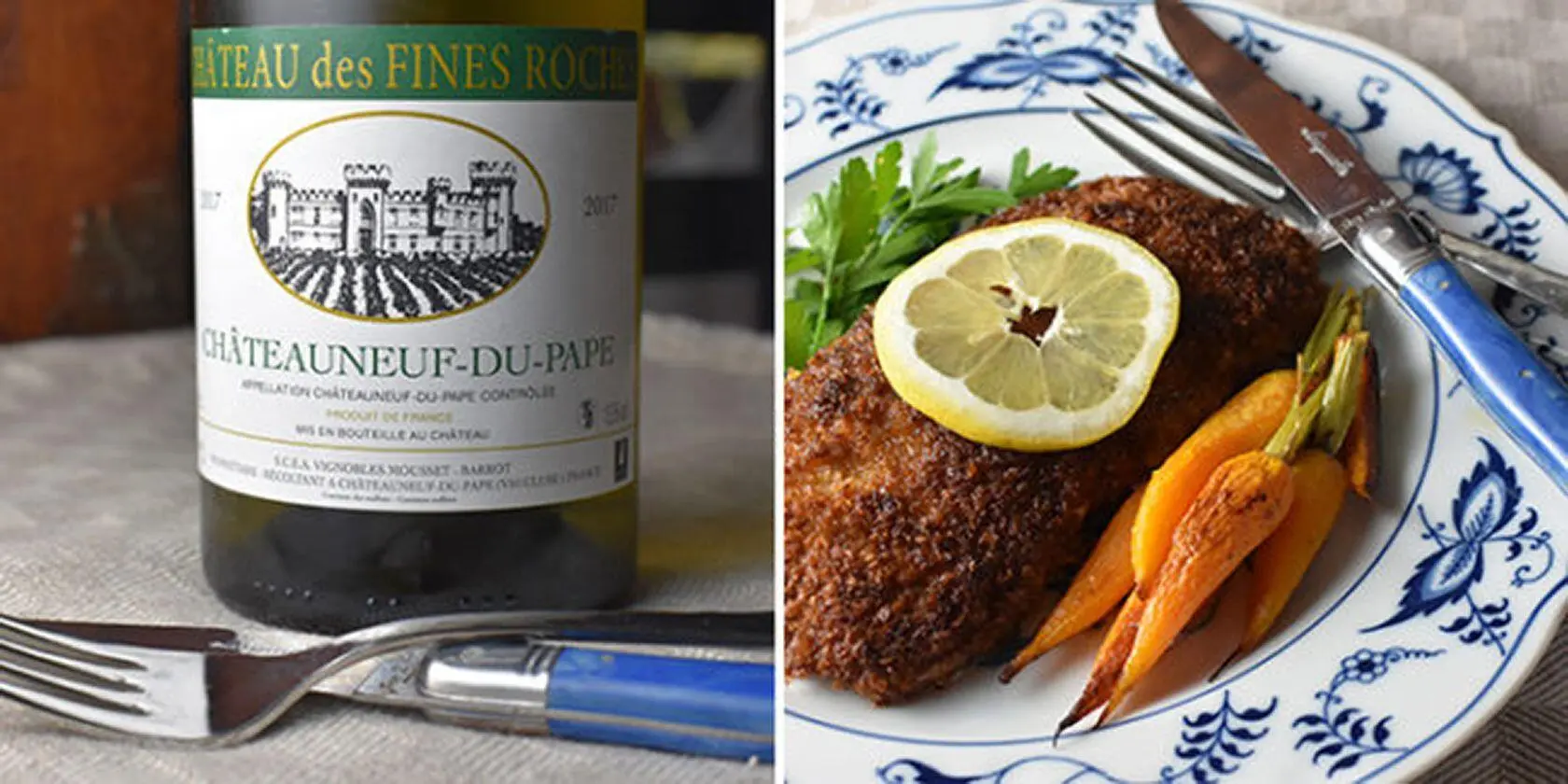Discover the art of food pairing with Châteauneuf-du-Pape wine. Explore expert tips and perfect pairings in our guide to elevate your dining experience.
Intro
Wine, with its intricate symphony of flavors and aromas, has long been regarded as a catalyst for culinary enchantment. Among the treasures of the wine world, Châteauneuf-du-Pape stands as a majestic masterpiece. This esteemed wine, hailing from the sun-soaked vineyards of France’s Rhône Valley, possesses a complexity and character that beckon to be paired with an array of delectable dishes.
In the world of gastronomy, the concept of food pairing is akin to an art form, where the harmony of flavors can transform an ordinary meal into a culinary symphony. The marriage of Châteauneuf-du-Pape with the right cuisine is a testament to this art, offering an experience that transcends the ordinary, tantalizing the taste buds and igniting the senses.
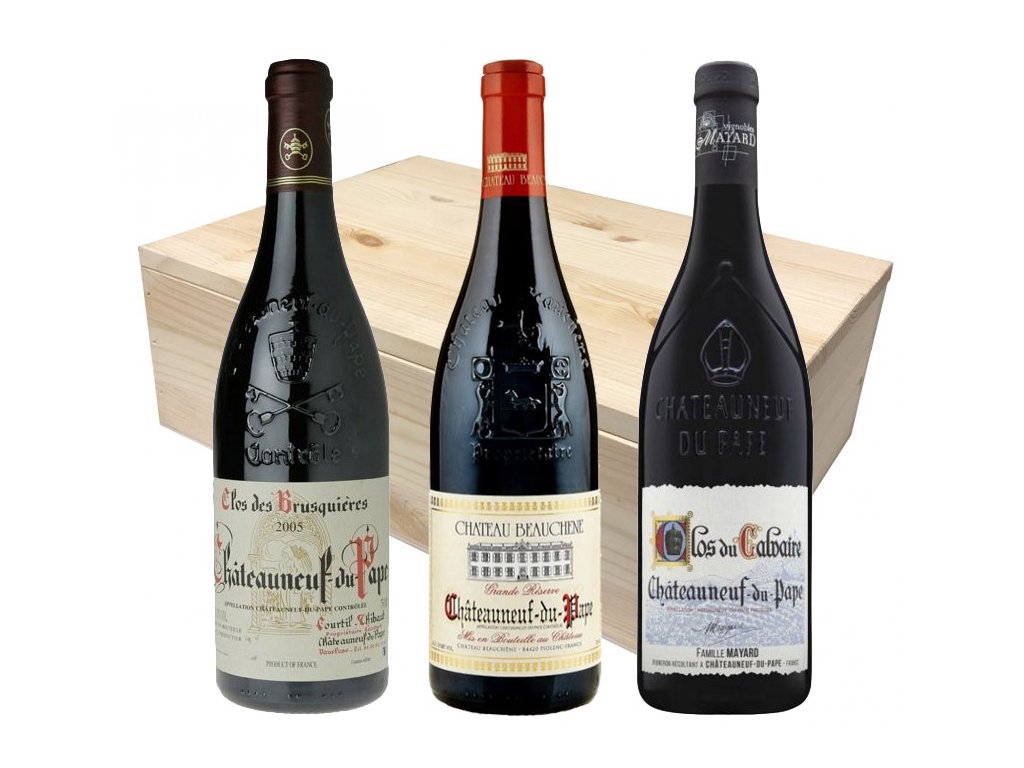
This guide embarks on a gastronomic journey, where wine enthusiasts and food lovers alike will explore the nuances of Châteauneuf-du-Pape and discover the secrets to perfect food pairings. From the vineyards of the Rhône to your dining table, join us in unlocking the magic of “Food Pairing with Châteauneuf-du-Pape,” where flavors converge, and moments are savored in exquisite harmony.
Characteristics of Châteauneuf-du-Pape
The Châteauneuf-du-Pape wine region, nestled in the southern part of the Rhône Valley in southeastern France, is not only one of the most esteemed wine appellations in the country but also one of the most iconic in the world. This region is renowned for its rich history, unique terroir, and exceptional wines. It continues to produce some of the most celebrated and sought-after wines in the world, making it a must-visit destination for wine aficionados and a source of pride for the Rhône Valley.
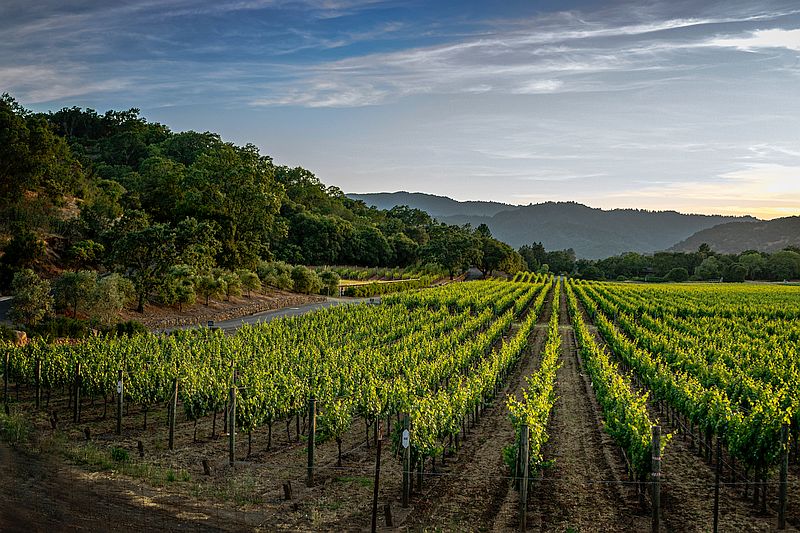
Châteauneuf-du-Pape, the esteemed wine appellation in the Rhône Valley of France, is celebrated for its diverse blend of grape varieties that contribute to the wine’s complexity and character. While up to 18 grape varieties are permitted, several key ones dominate:
- Grenache: As the leading player in Châteauneuf-du-Pape, Grenache lends ripe red fruit flavors, floral notes, and a lush, velvety texture to the wine. It thrives in the region’s sunny climate and is typically the dominant grape variety in the blends.
- Syrah: Syrah brings depth and complexity with its dark fruit flavors, hints of black pepper, and subtle spices. It adds structure and contributes to the wine’s aging potential.
- Mourvèdre: Known for its earthy, meaty characteristics, Mourvèdre adds tannins and a sense of terroir to the wine. It enhances the wine’s ability to age gracefully over many years.
- Cinsault, Counoise, and others: These supporting varieties contribute their unique traits, adding nuances to the final blend. Cinsault provides elegance, while Counoise imparts freshness and bright acidity.
Ideal Food Pairings with Châteauneuf-du-Pape
1. Appetizers and Starters
- Charcuterie Board
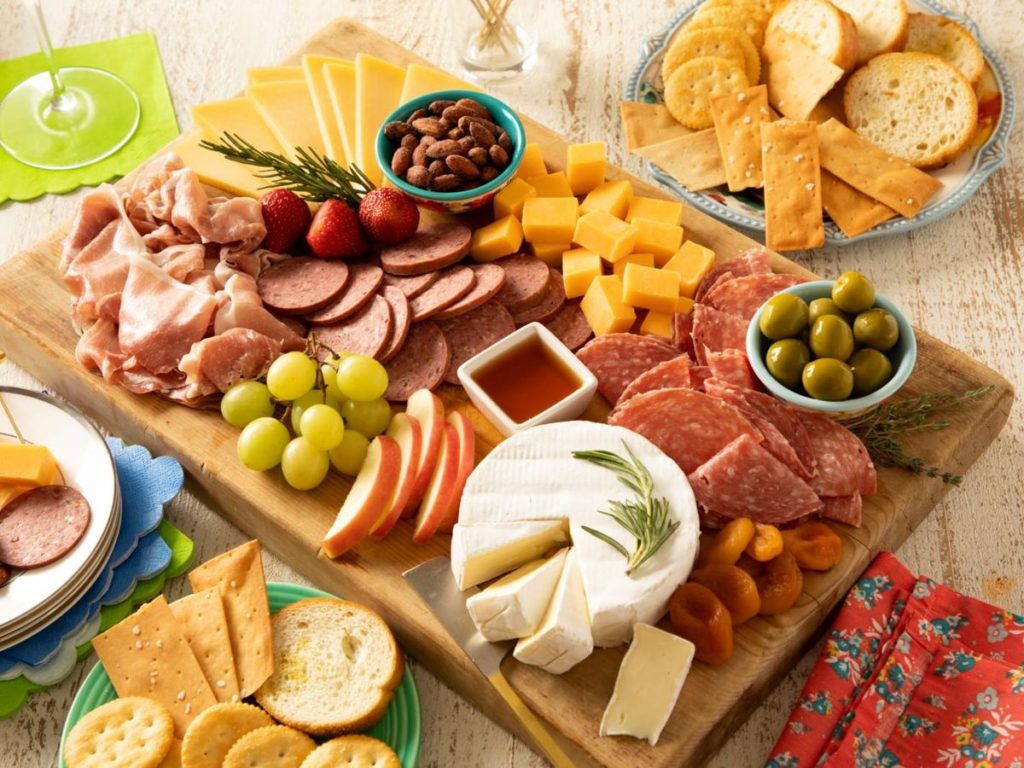
A well-curated charcuterie board featuring an assortment of cured meats such as prosciutto, salami, and chorizo pairs beautifully with Châteauneuf-du-Pape. The saltiness and savory notes of the meats complement the wine’s fruitiness and depth.
For a Charcuterie Board, consider a Châteauneuf-du-Pape that leans more towards the fruity and approachable side. Younger vintages with bright fruit flavors and a good balance of tannins and acidity can work well. Grenache-dominant blends or those with a higher proportion of Syrah can be particularly suitable.
Serve Châteauneuf-du-Pape at the appropriate temperature, ideally between 60-68°F (15-20°C). Slightly chilled for lighter styles or closer to room temperature for more robust versions.
- Cheese Selection
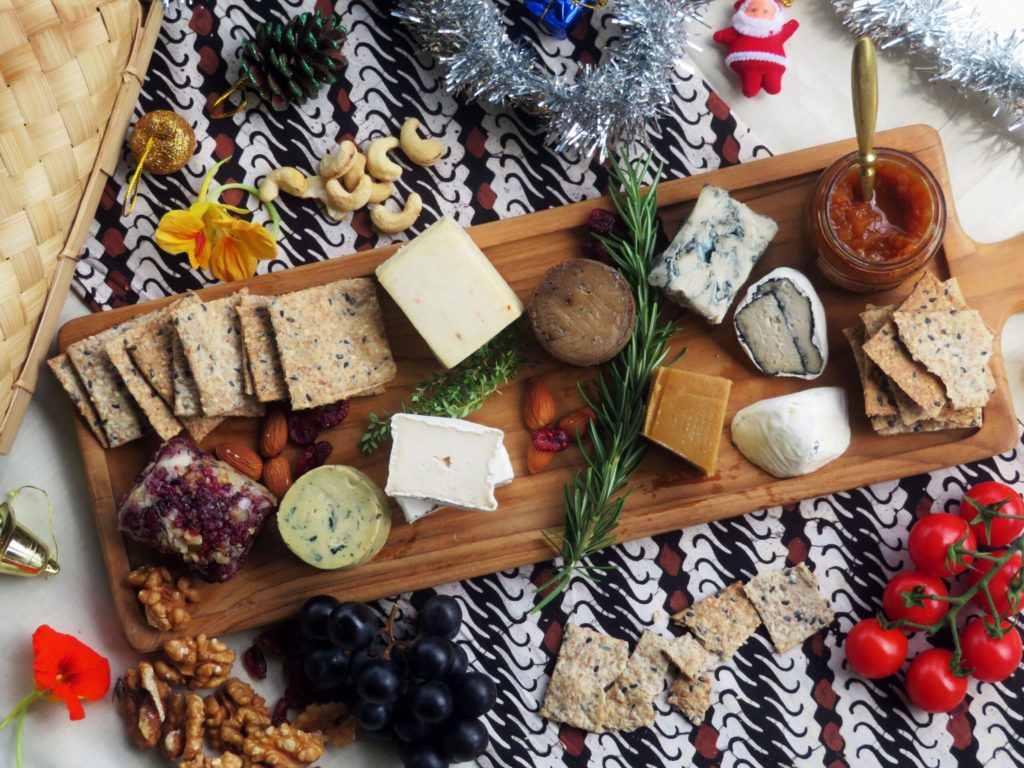
Châteauneuf-du-Pape goes wonderfully with a range of cheeses. Opt for aged cheeses like Gouda, Manchego, or Parmesan, as their nutty flavors and firm textures harmonize with the wine’s complexity. The wine’s medium to full body and balanced acidity complement the varied textures of cheese, from soft and creamy Brie to hard and nutty Parmesan.
Châteauneuf-du-Pape, especially those with a higher proportion of Grenache, tends to have approachable tannins that work well with cheese. Tannins can soften the creaminess of some cheeses and provide structure to the pairing.
Serve the cheese and Châteauneuf-du-Pape at the right temperature. While red wine is typically served at cellar temperature (around 60-68°F or 15-20°C), cheeses vary. Soft cheeses like Brie are best served slightly chilled, while hard cheeses like Parmesan can be served closer to room temperature.
- Roasted Vegetable Platter

Roasted vegetables, such as bell peppers, eggplant, and zucchini, drizzled with olive oil and seasoned with herbs, are a delightful pairing. The sweet caramelization of the vegetables echoes the wine’s fruitiness and herbaceous notes. The wine’s medium to full body and balanced acidity work well with the varied textures of roasted vegetables, from tender and slightly crispy to creamy and soft.
When pairing with a Roasted Vegetable Platter, consider a Châteauneuf-du-Pape that leans towards the fruity and approachable side. Younger vintages with bright red fruit flavors and moderate tannins can work well.
Serve the roasted vegetables warm or at room temperature to allow their flavors to shine. Châteauneuf-du-Pape can be served at cellar temperature (around 60-68°F or 15-20°C).
You might be like:
- Best Wine for Italian Food: A Pairing Guide by Wine Experts
- Can A Wine Fridge Be Used for Food? Exploring the Possibilities
- The 12+ BEST Wine Pairing With Grilled Pork Chops
2. Main Courses
- Grilled lamb and beef dishes
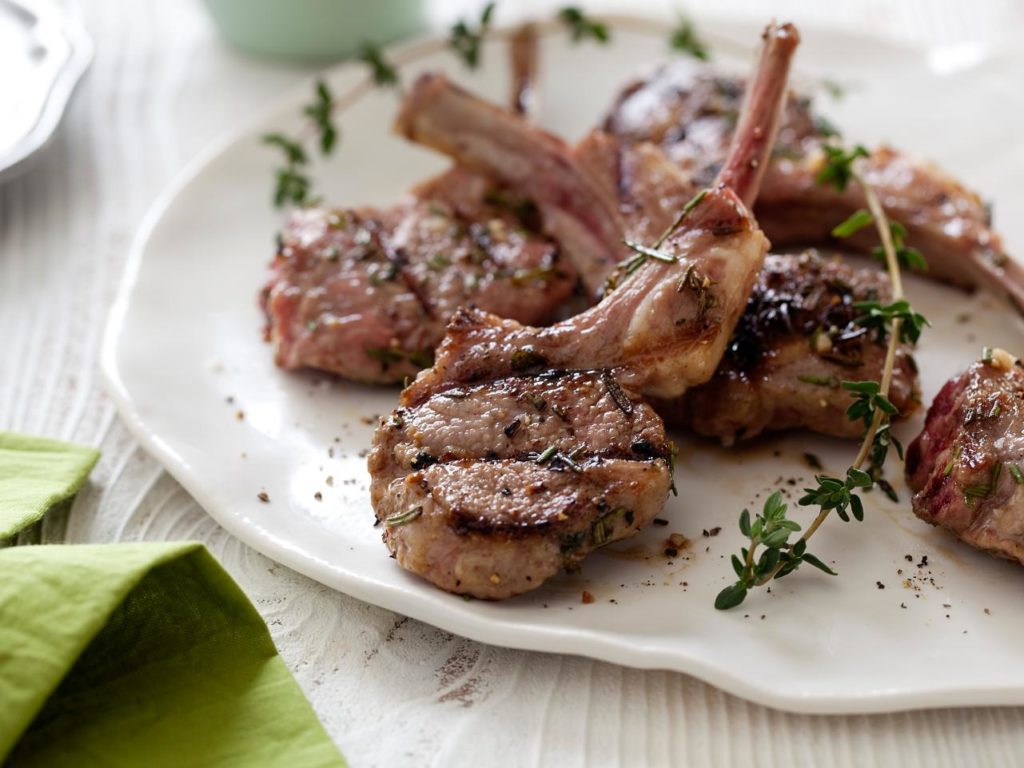
Châteauneuf-du-Pape’s rich flavors and moderate tannins complement the bold flavors of grilled lamb and beef dishes beautifully. The wine’s tannins can help cut through the meat’s fat. Grilled lamb and beef dishes are excellent companions for Châteauneuf-du-Pape wine, as the wine’s rich and complex characteristics complement the bold flavors of these meats
The wine’s medium to full body and moderate tannins are well-suited to stand up to the richness and texture of grilled meats, enhancing the overall dining experience. Châteauneuf-du-Pape’s balanced acidity can cut through the fat of the meats, refreshing the palate between bites.
When grilling lamb or beef, consider the seasonings and marinades used. Herbs like rosemary, thyme, and oregano can enhance the compatibility of Châteauneuf-du-Pape’s herbaceous notes. Serve the grilled meat hot off the grill to fully appreciate its flavors and texture. The wine should be at cellar temperature, ideally around 60-68°F (15-20°C).
- Poultry and Game Birds

Poultry and game birds can be wonderful partners for Châteauneuf-du-Pape wines, offering a harmonious pairing that accentuates the flavors of both the wine and the dish. The wine’s medium to full body and moderate tannins provide a nice balance to the tender and often succulent meat of poultry and game birds.
When pairing with poultry and game birds, consider Châteauneuf-du-Pape wines that strike a balance between fruitiness and tannin structure. Look for younger vintages with vibrant red fruit flavors and moderate tannins.
Serve poultry and game birds at the appropriate temperature to ensure they’re enjoyed at their best. Châteauneuf-du-Pape should be served at cellar temperature, around 60-68°F (15-20°C).
- Mediterranean Cuisine

Mediterranean cuisine and Châteauneuf-du-Pape wines are a fantastic pairing, as the wine’s rich, fruity, and herbaceous qualities complement the flavors commonly found in dishes from the Mediterranean region. Châteauneuf-du-Pape’s medium to full body and moderate tannins work well with a variety of Mediterranean dishes, including grilled meats, roasted vegetables, and stews.
The wine’s balanced acidity can cut through the richness of Mediterranean dishes, providing a refreshing contrast. Mediterranean cuisine encompasses a wide range of dishes from various countries bordering the Mediterranean Sea. Try it with dishes like braised rabbit, couscous with lamb, or Moroccan tagines.
3. Vegetarian and Vegan Options
- Mushroom Risotto
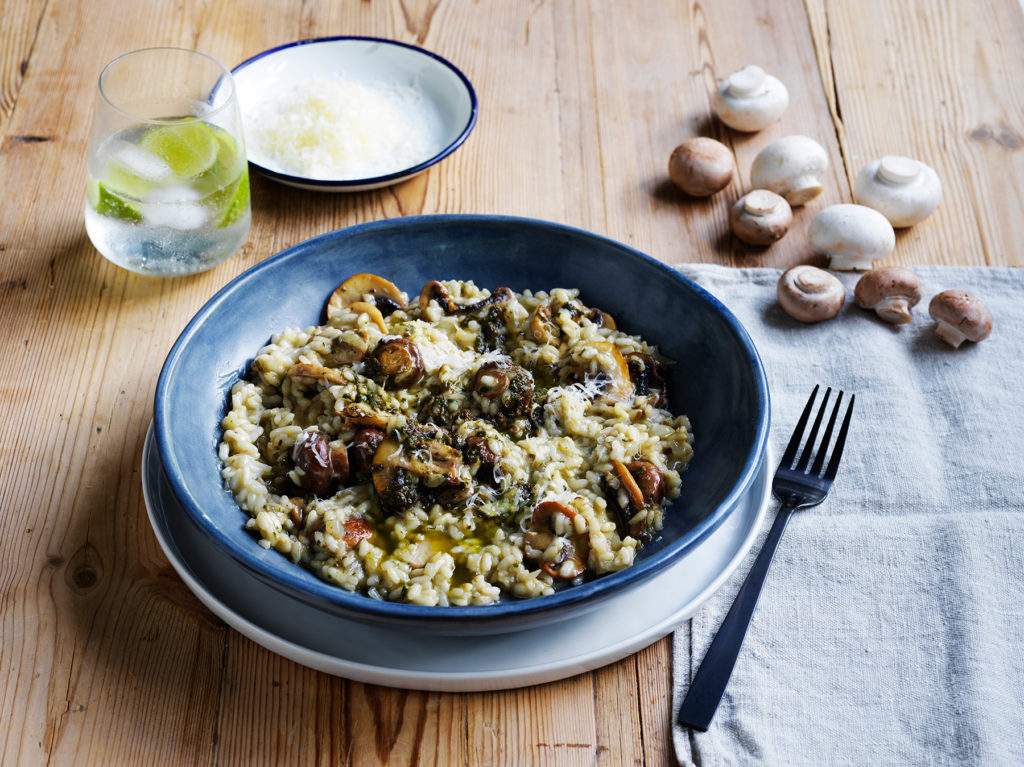
Mushroom risotto and Châteauneuf-du-Pape can make for a delightful pairing, offering a blend of earthy, savory, and herbal flavors that complement each other.
The wine’s medium to full body and moderate tannins provide a nice balance to the creamy and velvety texture of mushroom risotto. When pairing with mushroom risotto, consider Châteauneuf-du-Pape wines that offer a balance between fruitiness and tannin structure.
The type of mushrooms used in the risotto can influence the pairing. Common choices like cremini, shiitake, or porcini each have their own unique flavors and textures, so consider which ones you prefer and how they interact with the wine.
- Eggplant Parmesan
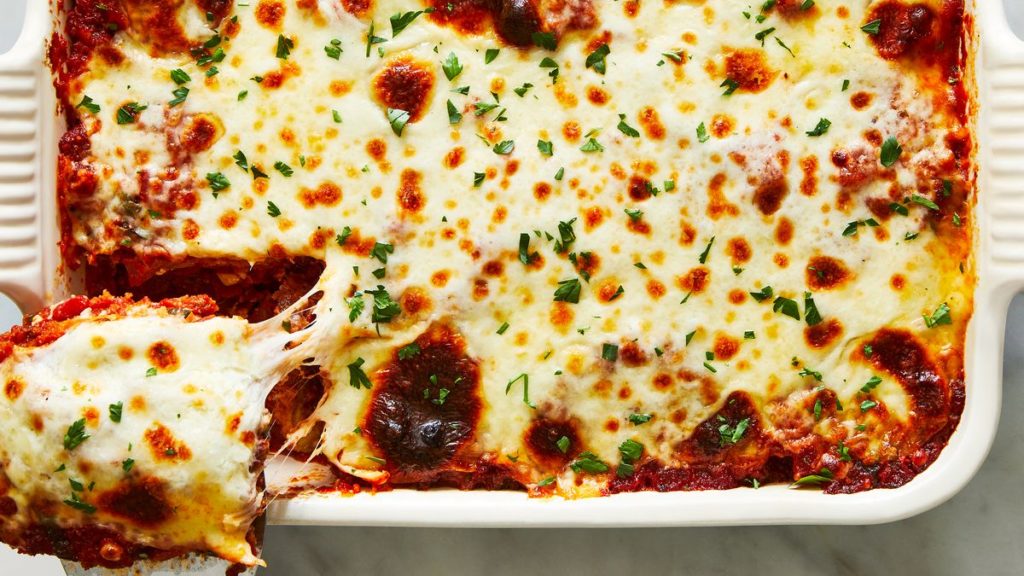
Eggplant Parmesan and Châteauneuf-du-Pape can make for a delightful and satisfying pairing, combining the rich, savory, and herbal flavors of the dish with the wine’s complexity. When pairing with Eggplant Parmesan, consider Châteauneuf-du-Pape wines that offer a balance between fruitiness and tannin structure. Look for younger vintages with bright red fruit flavors and moderate tannins.
The way the Eggplant Parmesan is prepared can affect the pairing. Variations in cheese, sauce, and breading can create different nuances. Choose a preparation style that aligns with your wine’s profile. Serve the Eggplant Parmesan hot from the oven to fully appreciate its texture and flavors. Châteauneuf-du-Pape should be served at cellar temperature, around 60-68°F (15-20°C).
- Vegan Ratatouille

A classic Provençal dish made with a medley of vegetables like eggplant, zucchini, bell peppers, and tomatoes, cooked in herbs and olive oil, is a perfect vegan pairing. Châteauneuf-du-Pape wines often feature ripe red and black fruit flavors, hints of spices, and herbal notes. These elements harmonize well with the savory, tomato-based sauce, and the umami-rich eggplant in Eggplant Parmesan.
Grenache-dominant blends or those with Syrah can be excellent choices, as they often provide the right mix of fruitiness and structure for this pairing. Eggplant Parmesan can be quite rich, so look for Châteauneuf-du-Pape wines with a balance of fruitiness and tannins to complement the dish without overwhelming it. The wine’s moderate tannins can also cut through the richness.
4. Seafood and Fish Pairings
- Grilled Salmon
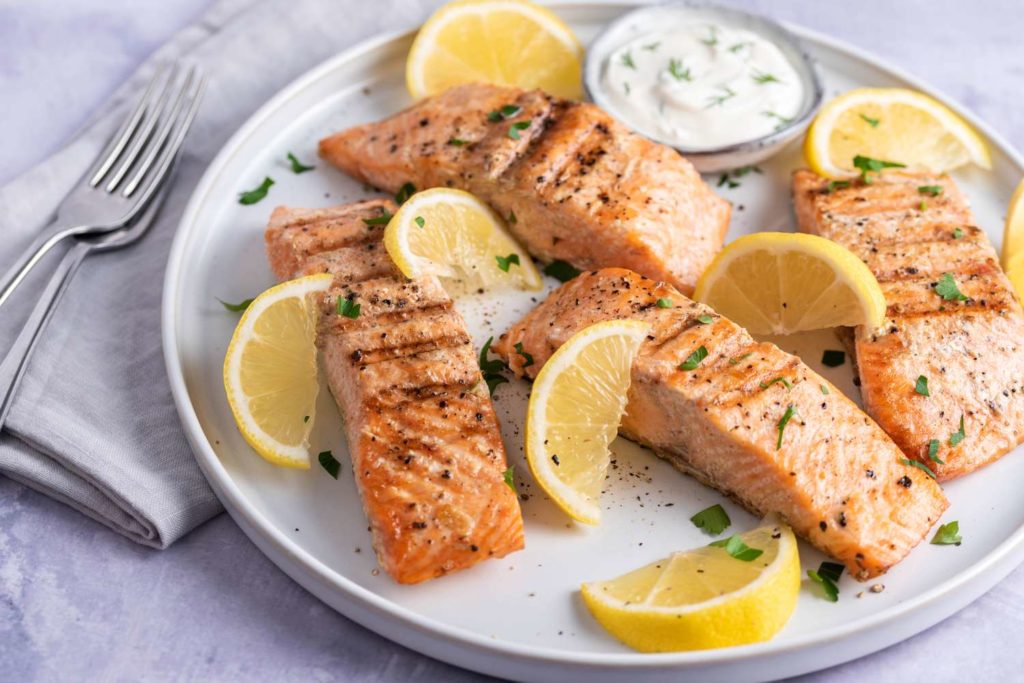
Grilled salmon, with its robust flavor and slightly fatty texture, can pair nicely with a fruit-forward Châteauneuf-du-Pape. The wine’s red fruit notes and moderate tannins complement the salmon’s richness. The wine’s medium to full body and moderate tannins provide a pleasing balance to the fish’s meaty and slightly fatty texture.
Pay attention to the grilling method used for the salmon. Whether it’s grilled over open flames or on a cedar plank, the smoky notes from grilling can enhance the pairing. If you’re serving the grilled salmon with a sauce, choose one that complements the wine’s flavors. A light tomato-based sauce or a lemon-dill sauce can work well.
- Shellfish Stew
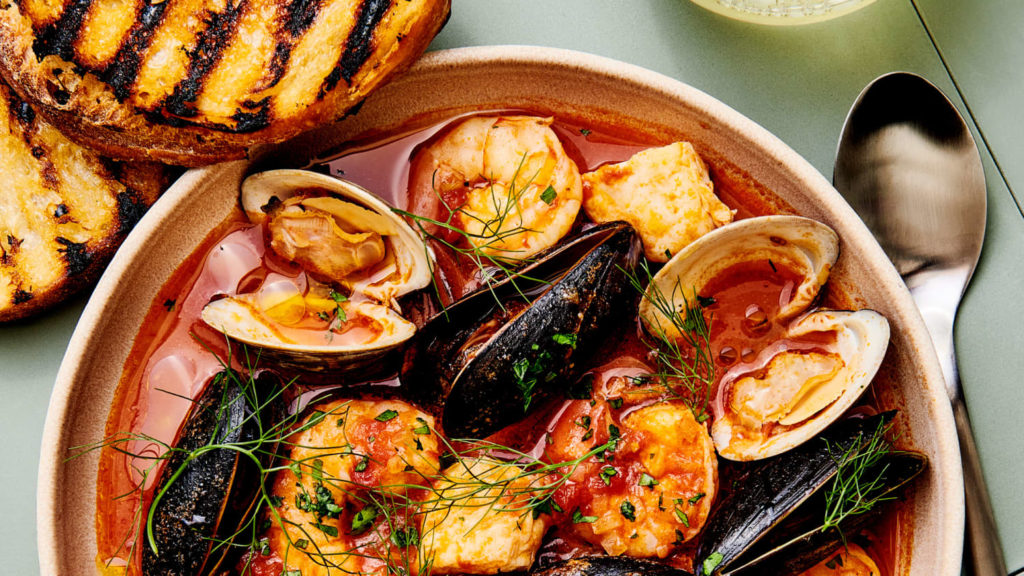
A hearty shellfish stew, such as bouillabaisse, featuring a mix of seafood and aromatic herbs, can pair nicely with a more structured Châteauneuf-du-Pape. Châteauneuf-du-Pape’s herbaceous and spicy qualities can complement the stew if it includes fresh herbs or spices such as thyme, bay leaves, or saffron.
Grenache-dominant blends or those with Syrah can be excellent choices, as they often provide the right mix of fruitiness and structure for this pairing. The type of shellfish used in the stew can influence the pairing. Common choices include mussels, clams, shrimp, and sometimes even crab or lobster. Consider which shellfish you prefer and how they interact with the wine.
Practical Tips for Pairing Success
Serving temperature and glassware play essential roles in enhancing the experience of food pairing with Châteauneuf-du-Pape wine. Châteauneuf-du-Pape is a red wine that benefits from being served at the appropriate temperature to showcase its flavors and characteristics. Generally, aim for a serving temperature of around 60-68°F (15-20°C).
If your wine has been stored at cellar temperature (around 55°F or 13°C), you may want to chill it slightly before serving. A brief stint in the refrigerator for 15-20 minutes should suffice. Avoid over-chilling, as it can muffle the wine’s flavors. While not always necessary, Châteauneuf-du-Pape wines, especially older vintages, can benefit from decanting. This allows the wine to breathe and can enhance its aromas and flavors. Decant for about 30 minutes to an hour before serving.
The choice of glassware can significantly impact your wine and food pairing experience. Use a larger, rounded bowl glass, similar to a Burgundy or Bordeaux glass. This shape allows the wine to breathe and concentrates its aromas, enhancing your ability to appreciate the wine’s complex bouquet. Always use stemmed glasses to prevent your hand’s warmth from affecting the wine’s temperature. The stem also provides a convenient way to swirl the wine, releasing its aromas.
FAQs
1) What types of dishes pair best with Châteauneuf-du-Pape?
Châteauneuf-du-Pape complements a range of foods, including grilled meats like lamb and beef, Mediterranean cuisine, and rich, savory dishes.
2) Are there specific guidelines for pairing Châteauneuf-du-Pape with food?
While there are general guidelines, wine pairing is subjective. However, Châteauneuf-du-Pape often pairs best with dishes that have robust flavors and are not overly spicy or delicate.
3) Can I pair Châteauneuf-du-Pape with seafood or fish?
Yes, you can, but it’s important to choose seafood and fish preparations that are richer and more substantial, such as grilled salmon or seafood stews.
4) Are there vegetarian or vegan options for pairing with Châteauneuf-du-Pape?
Absolutely! Vegetable-based dishes like ratatouille or mushroom risotto can be excellent pairings for Châteauneuf-du-Pape.
5) Should I consider the wine’s age when pairing with food?
Yes, the age of Châteauneuf-du-Pape can affect its flavor profile. Younger wines may pair well with different dishes than older, more mature ones. Consider the wine’s age when choosing your pairing.
6) What desserts go well with Châteauneuf-du-Pape?
Châteauneuf-du-Pape can pair nicely with chocolate desserts or those featuring rich, caramelized flavors. Alternatively, you can enjoy it on its own after the meal.
7) Are there any regional or seasonal considerations when pairing Châteauneuf-du-Pape with food?
Yes, the availability of seasonal ingredients and local cuisine can influence your pairings. For example, consider pairing with Provencal dishes if you’re in the Rhône Valley.
8) What should I keep in mind when experimenting with Châteauneuf-du-Pape pairings?
Don’t be afraid to experiment and trust your palate. Try different combinations to discover what you enjoy most. Start with the basic guidelines and go from there.
Conclusion
In conclusion, food pairing with Châteauneuf-du-Pape is a delightful journey of culinary harmony. This versatile wine, with its fruity, herbal, and moderately tannic character, complements a wide range of dishes.
Successful pairings involve understanding the wine’s traits, selecting the right type, considering seasonings and temperatures, and experimenting with combinations. It’s a symphony of tastes and aromas, where wine and cuisine create lasting memories.
Raise your glass to Châteauneuf-du-Pape’s ability to enhance flavors and unite wine and food in culinary magic! Cheers!

With over a decade of experience in viticulture, Simon Conner is the perfect writer to help you find and maintain your prized vintages. As an expert on food, wine, and kitchen products, he offers his expertise to guide clients through every step involved with collecting and selling wines.

